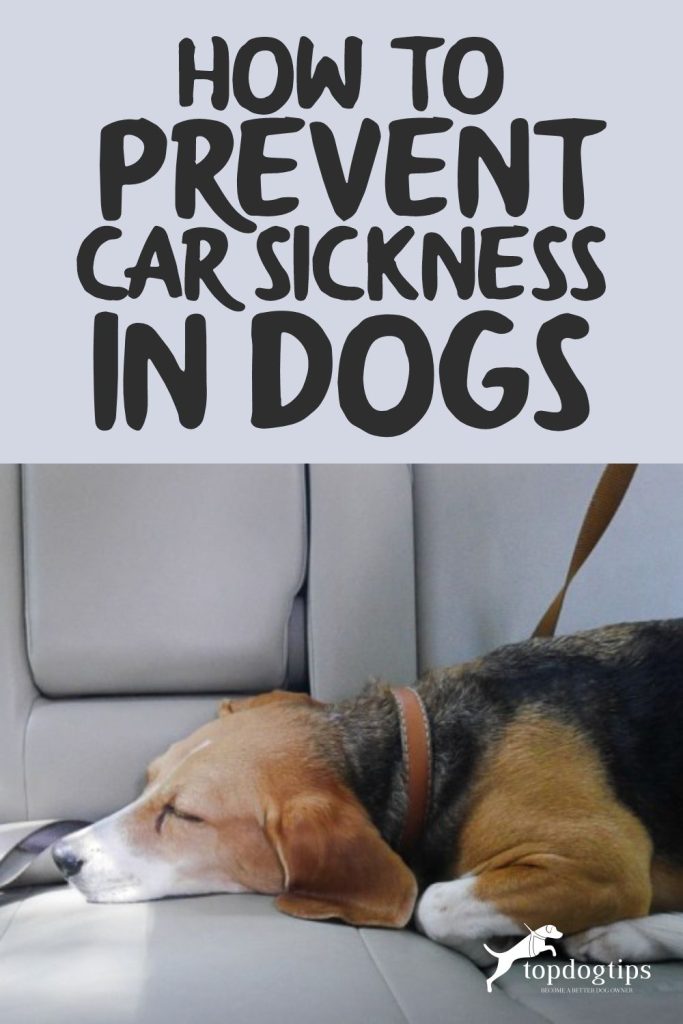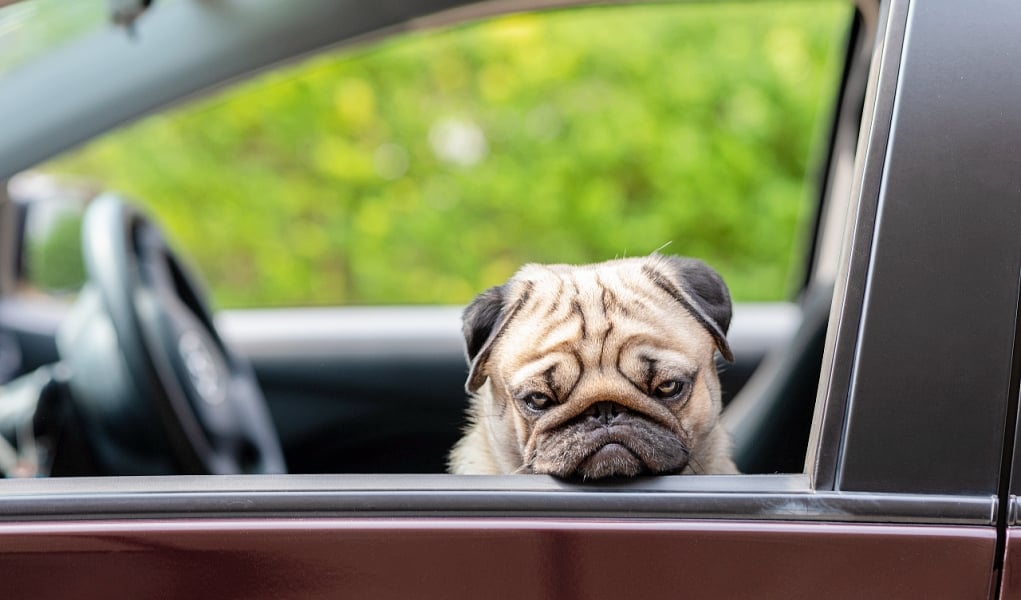Does your dog get nauseous, drool excessively or throw up while riding in the car? These are all signs of car sickness in dogs. Just like humans, dogs can suffer from motion sickness when riding in a vehicle.
Car sickness in dogs is more commonly seen in puppies, because the parts of the inner ear that are involved in balance have not fully developed yet. Most puppies will grow out of getting motion sick while going for a ride, but there are some things you can do to prevent car sickness until that happens.
When you take your dog for a ride, keep an eye out for signs of motion sickness including:
- lethargy
- excessive yawning
- whining
- excessive drooling
- vomiting
- excessively licking or smacking lips
If you notice any of these signs, pull over as quickly as you can. Take your dog out of the car. Walking on solid ground and breathing fresh air will help make him feel better. You may need to pull over multiple times during a single ride, but it will help to prevent your dog from throwing up in your vehicle.
How To Prevent Car Sickness in Dogs
 Conditioning your dog for car rides is probably the most effective way to prevent car sickness. Start taking short car trips every day, and gradually increase the duration of the ride. Begin simply by allowing your dog to get comfortable in your vehicle while it's parked, then keep increasing the ride length in 5-10 minute increments until your pup can ride for an hour or more without getting sick.
Conditioning your dog for car rides is probably the most effective way to prevent car sickness. Start taking short car trips every day, and gradually increase the duration of the ride. Begin simply by allowing your dog to get comfortable in your vehicle while it's parked, then keep increasing the ride length in 5-10 minute increments until your pup can ride for an hour or more without getting sick.
You can also do your best to make the ride as comfortable and steady as possible. For example, getting your dog strapped into a car seat will prevent him from sliding around the backseat and will also keep him facing in the same direction, which usually helps with car sickness.
During the ride, try lowering car windows a few inches. This helps to balance the car’s internal air pressure as well as bring fresh air inside, which can help relieve feelings of nausea. Whether you keep the windows down or the air conditioner on, keeping the car cool will also help to prevent car sickness in dogs.
Try playing classical music or music for dogs, since it's been shown in studies to calm dogs and ease their anxiety. Bring a scent article, such as a blanket or t-shirt that smells like home to keep the environment familiar for your dog.
If possible, keep your dog in the front seat. The side windows in the backseat give your dog a whizzing view that often causes car sickness. Having access to the view out the windshield may make your dog feel a bit better.
Withhold food for at least 2 hours before you take your dog for a ride. Having a full stomach can make nausea worse, and often ensures that your pet will vomit on your upholstery.
ALSO: 5 Best Dog Car Barriers for Safe Travel
Medications for Car Sickness in Dogs
If your dog doesn’t outgrow car sickness or doesn’t seem to respond to your attempts to ease his symptoms with the methods described above, you should seek further advice from your veterinarian. They will look for underlying symptoms and/or medical conditions, such as an inner ear infection, that may be causing the problem.
Your vet may also suggest medications for car sickness in dogs. Some of these may require a prescription, but most can be bought over-the-counter. Some of the most popular brands include:
1. Diphenhydramine (antihistamine). This is an antihistamine, also known as Benadryl, and will have a sedative action to soothe your dog as well as reduce drooling.
2. Meclizine. This is an over-the-counter medication also known as Bonamine. It is used to treat motion sickness, and does not have the sedative effect that diphenhydramine does.
3. Dimenhydrinate. This is well known as Dramamine and treats nausea and motion sickness. It also does not have a sedative effect.
4. Acepromazine. This medication requires a prescription. It is used to tranquilize and soothe animals as well as reduce motion sickness. This medication does have a sedative effect.
You may also like to check out my article on home remedies for dog car sickness if you're looking for a natural option. Car sickness is not dangerous to your pet, but it is uncomfortable and needs to be addressed if it doesn't go away.
READ NEXT: 15 Safety Tips for Traveling in Cars with Dogs














